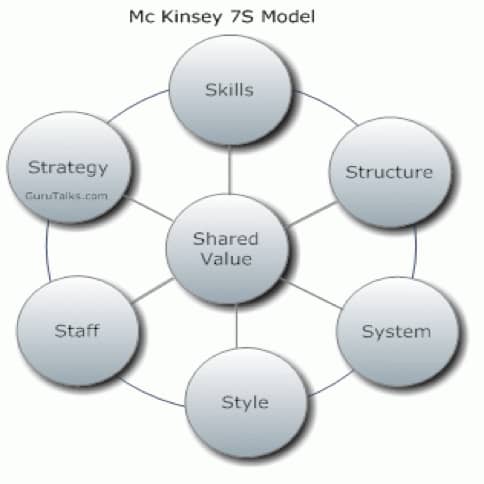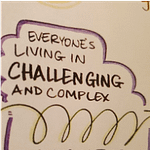I’ve spent some time browsing the Engage for Success website and have picked out some of my favourite resources about culture. Culture is complicated and can be described as,
“A set of shared, taken for granted, implicit assumptions that a group holds”
(Schein, 1996, p. 236)
It can be all encompassing, is often historically determined and is socially constructed through interaction between people (Hofstede, Neuijen, Ohayv & Sanders, 1990). The influence of culture is fundamental in issues of employee engagement and whilst often quite intangible in itself, is often inferred by behaviours and organisational features. There will be multiple influences on employee engagement, for example, the ways that managers behave which might be regarded as typical for an organisation, the stories that an organisation tells about its purpose, or the ways that employees are encouraged to participate in organisational or team decisions. This relationship is also reciprocal. Behaviour is driven by culture, language and social interaction and behaviours constantly reinvent culture (Giorgio,Lockwood & Glynn, 2015). Employees both create culture and experience it. It can be represented and measured in different ways, but as an example a web of interrelated aspects might capture a range of influences within an organisation.
(Waterman, Peters and Phillips, 1980)
It is also worth noting that culture can be shared by all, differentiated by sub cultures or be fragmented across an organisation and will be experienced slightly differently by each individual (Martin, 1992, in Yauch & Steudel, 2003).
So, whilst culture is complex, this doesn’t mean that it can’t be changed or influenced over time. Lisa Sofianos has kindly shared a useful diagnostic tool from her book -’Creating Authentic Organizations; Bringing Meaning and Engagement Back to Work’. The notion of authenticity is rooted in the idea that workplaces need to embrace individual diversity. Individuals who are working in organisations where they can reveal their true selves and use their identities in organisations that align with their personal values are likely to experience greater levels of personal investment and well being. Recent neurological research has also found that individuals with a greater sense of purpose have higher oxytocin levels within the brain which leads to a sense of joy (Zak, 2017). To avoid a constant maintenance of a public and private self, there must be an environment of trust, an ability to speak out openly, to grow and develop and to have some autonomy about how work is organised. A psychologically “safe” environment where individuals experience mutual respect can foster team learning, well being and engagement (Edmondson, 1999, Anderson and West, 1998). Individuals are then free to become their authentic selves at work. Sofianos captures authenticity as the idea of three key freedoms that individuals can claim as their own. The freedom to speak enables having an open and honest dialogue within organisations, the freedom to operate liberates individuals to define tasks and self organise work in the best way for themselves and the freedom to actualise, describes an environment where individuals can discover and develop their personalities at work.
This climate of trust can be built by leader behaviour, for example ensuring that excellence is recognised, giving autonomy to team members, providing challenging learning opportunities, building relationships and allowing people to grow and develop as a whole person (Zak, 2017). Managers who can role model their own authenticity and allow others to experiment and to be flexible in how tasks are defined and who clearly communicate value, vision and strategic intent in a way that is individually meaningful can help individuals to claim their freedoms (Sofianos, 2017). This focus on building diverse, welcoming workplaces is key to embracing everyone as their authentic selves. Try the tool to discover how you could claim your freedoms in your workplace.
Thinking about the role of values and the importance of strong commitment and purpose in organisations, the engagement pledge is a useful way of voicing a team or organisational commitment to employee engagement.This can then facilitate annual action planning which can be measured, reviewed and celebrated. As part of a wider organisational picture, Engage for Success have also created guidance on building business values with integrity which links nicely to the previous discussion on authenticity. The emphasis on co-creation and communication of values shows how organisations can engage and empower employees to jointly create the culture and values of an organisation.
http://engageforsuccess.org/engagement-pledge-template
http://engageforsuccess.org/create-and-communicate-business-values-with-integrity
So how can you get employees involved? The toolkit for improving employee voice offers 20 top tips. I particularly liked ideas such as enlisting the support of employee champions and recruiting truthtellers who will give honest feedback on the state of employee engagement. Deliberately finding diverse views and perspectives on engagement in your organstions might be challenging, but could offer wider and more valuable insight. This bottom up approach to engagement places focus and some accountability on employees which I think is useful. This reinforces the two way street of building culture and engagement and the need for organisations and employees to work together to create something valuable.
There are lots of organisations doing great things to build cultures of engagement but I picked out a couple here which I thought were interesting. The DVLA held an event that really showed how powerful collaboration and employee involvement can be. Its engagement rally invited employees to a “hackathon” which created a safe space to critique staff engagement scores and to build action plans. There were various pit stops to be visited throughout the day, developed from themes that emerged from listening to 4000 employees. These covered areas like leadership, change, reward, recognition and learning and development. Action plans to drive improvements were developed collaboratively and were sponsored by senior staff. An interesting case study and another example of working together. Finally well worth a read is an article about Zappos and its CEO Tony Hseih’s thoughts on building a positive culture which embraces passion and purpose and recognises that building a culture is a long term game. For more insight into the Zappos culture take a look at their culture book. I really liked the quotes from the employees, you’ll find fun, unicorns, happiness and love! What does that tell us about employee engagement?
http://engageforsuccess.org/dvla-engagement-rally-sets-pace-for-their-journey-ahead
These resources aren’t a magic wand, or a complete answer to the question about how to build a culture where employee engagement can fluorish and grow but I hope they inspire you to make some positive changes in your organisation. Good luck!
If you’d like to comment on this blog or contact Kay, please find the original post on LinkedIn.
Written by:
Kay Galpin, HR Professional, Business Psychologist and Virtual Content Team Volunteer
Would you like to join our Virtual Content Team? Email sian@engageforsuccess.org to find out more!
References
Anderson, N.R. and West, M. A. (1998) Measuring climate for work group innovation: validation of the team climate inventory, Journal of Organisational Behaviour, 19,3,p.235.
Edmondson, A. (1999) Psychological Safety and Learning Behavior in Work Teams. Administrative Science Quarterly, 44 (1999): 350-383.
Giorgio, Lockwood & Glynn (2015) The Many Faces of Culture: Making Sense of 30 Years of Research on Culture in Organization Studies. The Academy of Management Annals, 9:1, 1-54, DOI: 10.1080/19416520.2015.1007645.
Hofstede, G., Neuijen,B.,Ohayv,D. D., Sanders, G.(1990) Measuring Organizational Cultures: A Qualitative and Quantitative Study Across Twenty Cases. Administrative Science Quarterly; 35, 2; p. 286.
Schein, E. H. (1996). Culture: The missing concept in organization studies. Administrative Science Quarterly, 41, 229–240. doi:10.2307/2393715.
Waterman, R.H., Peters, T.J. and Phillips, J.R. (1980) Structure is not Organisation. Business Horizons, Vol. 23, 3, pp14-26.
Yauch, C.A. & Steudel, H.J. 2003, “Complementary Use of Qualitative and Quantitative Cultural Assessment Methods”, Organizational Research Methods, vol. 6, no. 4, pp. 465-481.
Zak, P.L. (2017) The Neuroscience of Trust. Harvard Business Review Jan – Feb 2017.





